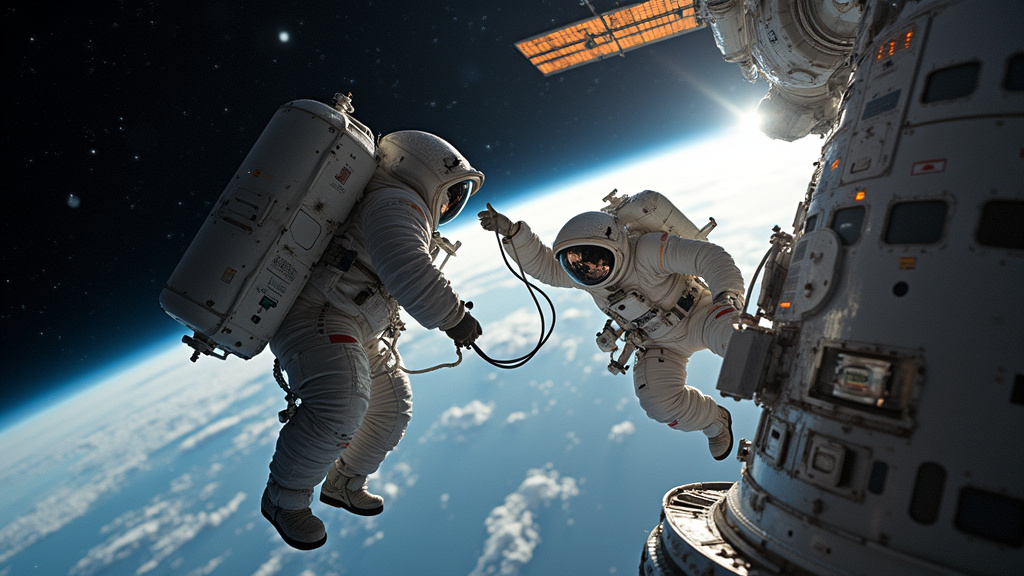CAPE CANAVERAL, Florida – A SpaceX Dragon spacecraft carrying the Axiom Mission 4 (Ax-4) crew successfully docked with the International Space Station (ISS) at 6:31 a.m. EDT on Thursday, June 26, marking the arrival of the fourth private astronaut mission to the orbiting laboratory. This significant event introduces a multinational crew to the station for an extended stay dedicated to scientific research, outreach, and commercial activities.
The four-person crew represents a diverse blend of experience and national firsts. Leading the mission is Peggy Whitson, a former NASA astronaut renowned for her extensive time spent in space. Joining her are pilot Shubhanshu Shukla of the Indian Space Research Organisation (ISRO), making history as the first ISRO astronaut to visit the ISS. The crew also includes mission specialists Sławosz Uznański-Wiśniewski, representing Poland and the European Space Agency (ESA), who is the first Pole to embark on a long-duration stay aboard the station, and Tibor Kapu of Hungary, marking Hungary’s first presence on the ISS.
Journey to Orbit
The journey to the ISS began earlier in the week with a predawn launch aboard a SpaceX Falcon 9 rocket. The launch occurred precisely at 2:31 a.m. EDT on June 25 from Launch Complex 39A at NASA’s Kennedy Space Center in Florida. This historic launch site has been the origin point for numerous pivotal space missions, including Apollo and Space Shuttle programs.
The Falcon 9, a workhorse in SpaceX’s fleet, propelled the Dragon capsule and its human cargo into orbit efficiently. Following a relatively short transit through Earth’s orbit, the spacecraft completed its automated rendezvous and docking procedure with the International Space Station.
The Docking Procedure
Docking is a complex maneuver that requires precise navigation and control. The Dragon spacecraft autonomously approached the ISS, utilizing a sophisticated suite of sensors and propulsion systems. The process culminated in a soft capture and secure connection to the Harmony module of the station. This seamless operation was monitored closely by flight control teams at NASA, Axiom Space, and SpaceX.
The successful docking signals the official start of the Ax-4 mission’s operational phase aboard the ISS. The Dragon capsule will remain attached to the station for the duration of the mission, serving as the crew’s transport vehicle for their eventual return to Earth.
Aboard the International Space Station
The Ax-4 crew is scheduled to spend approximately two weeks living and working alongside the resident expedition crew aboard the International Space Station. This period will be packed with a demanding schedule of activities.
The core objectives of the mission, as outlined by Axiom Space, center around conducting science, outreach, and commercial activities. While specific experiments are proprietary to the mission participants and commercial partners, these types of private missions typically involve research in areas such as human health in microgravity, advanced materials science, physics, and Earth observation. These experiments often complement the ongoing research conducted by national space agencies, contributing to a broader understanding of the effects of spaceflight on the human body and advancing technological capabilities.
Outreach activities are a significant component, involving educational broadcasts, communication sessions with students and the public, and documentation of their experiences. Commercial endeavors could range from in-space manufacturing demonstrations to marketing and media projects.
Historic International Participation
One of the defining features of Axiom Mission 4 is its remarkable international composition, particularly the inclusion of first-time national representatives for an ISS stay. Shubhanshu Shukla’s presence signifies a growing collaboration between India and the global space community, building on ISRO’s own ambitious space program. Sławosz Uznański-Wiśniewski’s flight, supported by Poland and the European Space Agency, highlights Poland’s increasing engagement in human spaceflight and space-based research through ESA. Tibor Kapu’s participation underscores Hungary’s contribution and interest in leveraging access to the unique microgravity environment of the ISS.
Peggy Whitson, a veteran of multiple long-duration stays on the ISS, including command roles, provides invaluable leadership and experience to the crew. Her presence ensures seasoned guidance for the less experienced members and facilitates the smooth execution of the mission’s complex objectives.
The Expanding Role of Private Missions
The success of Axiom Mission 4, following previous private astronaut missions like Ax-1, Ax-2, and Ax-3, solidifies the growing role of commercial entities in accessing and utilizing low Earth orbit. Axiom Space is at the forefront of this movement, working towards developing its own commercial space station modules to eventually replace the aging ISS.
These private missions provide opportunities for countries and organizations that may not have their own dedicated human spaceflight programs to send researchers, entrepreneurs, and even tourists to space. They represent a crucial step in opening up access to space beyond government-led initiatives, fostering innovation and creating new economic opportunities in the space sector.
Conclusion
The docking of the Axiom Mission 4 Dragon spacecraft and crew marks another successful chapter in the era of commercial spaceflight and international collaboration aboard the International Space Station. Over the next two weeks, the crew will undertake their ambitious schedule of scientific experiments, educational activities, and commercial projects, contributing valuable data and inspiration. Their safe arrival sets the stage for a productive stay aboard the orbiting laboratory, further demonstrating the capabilities of private space companies and the global nature of human space exploration.





